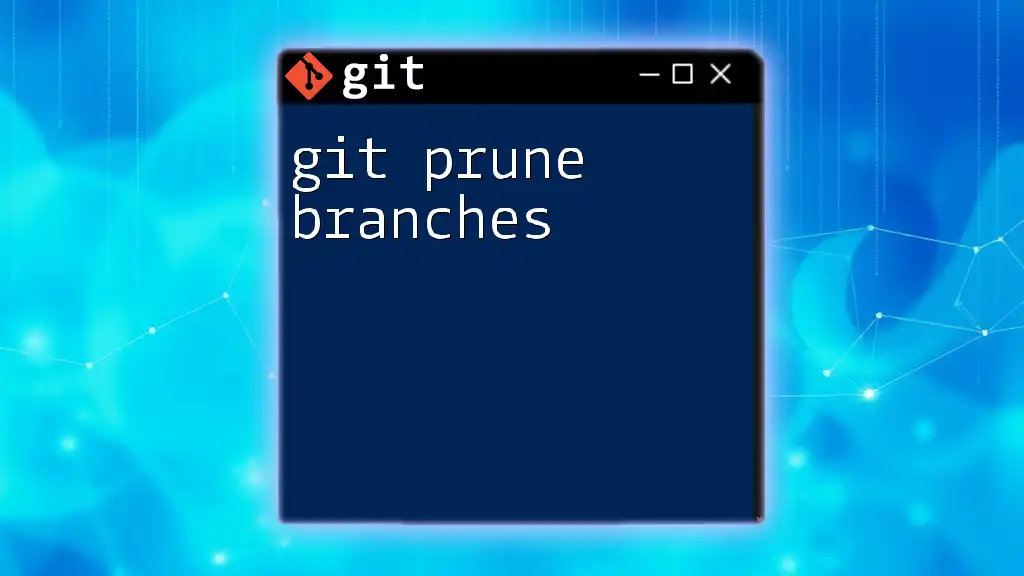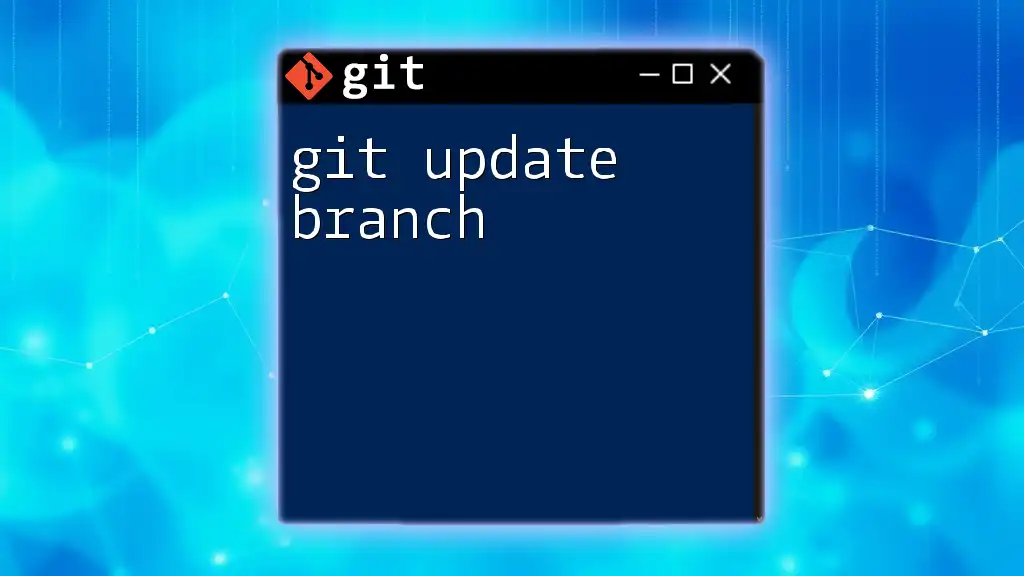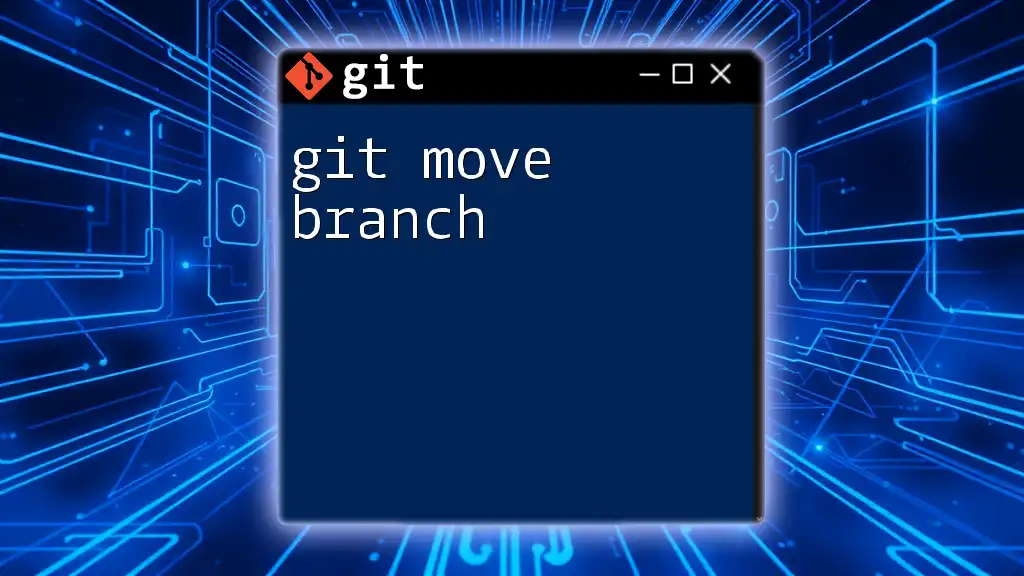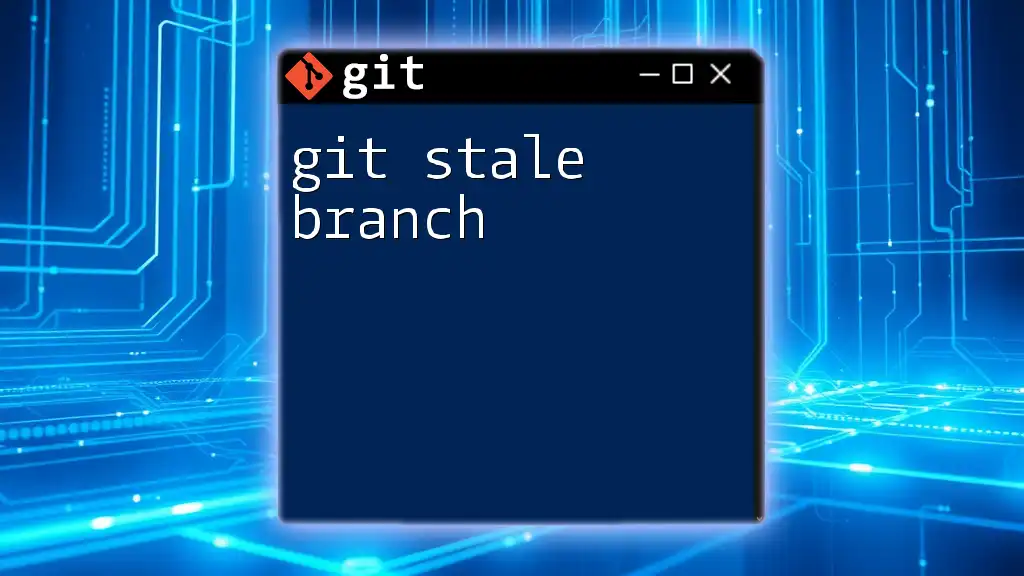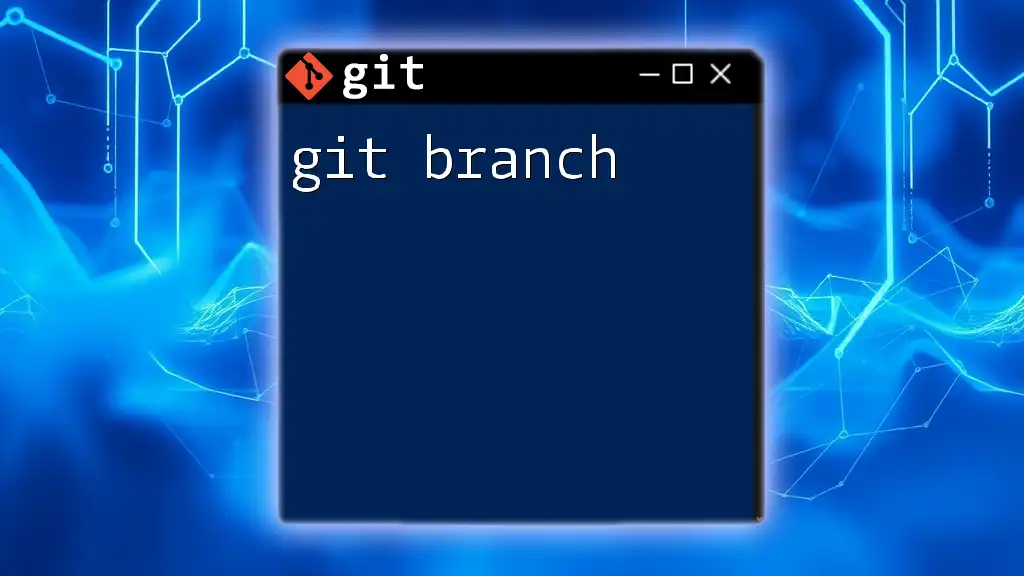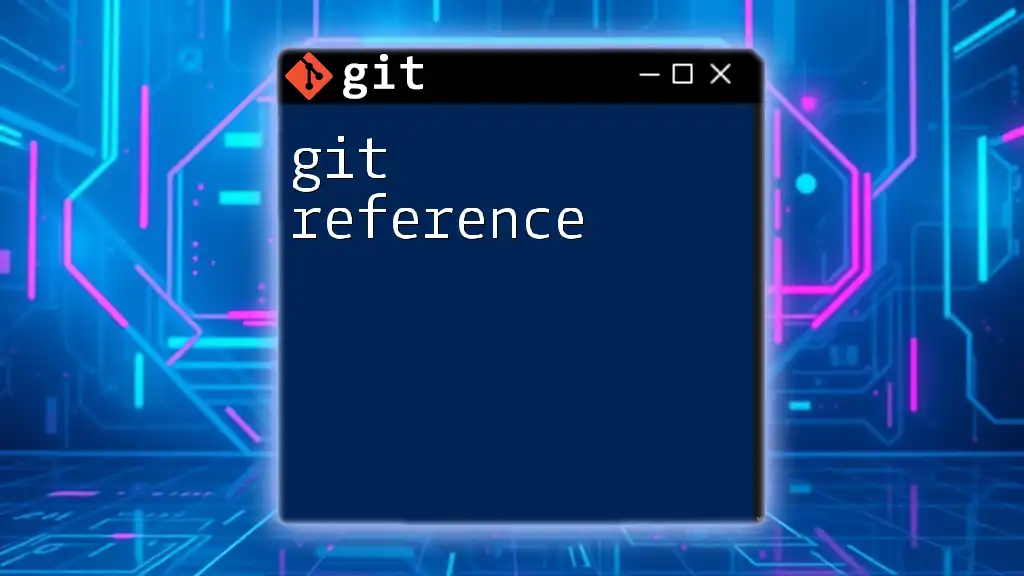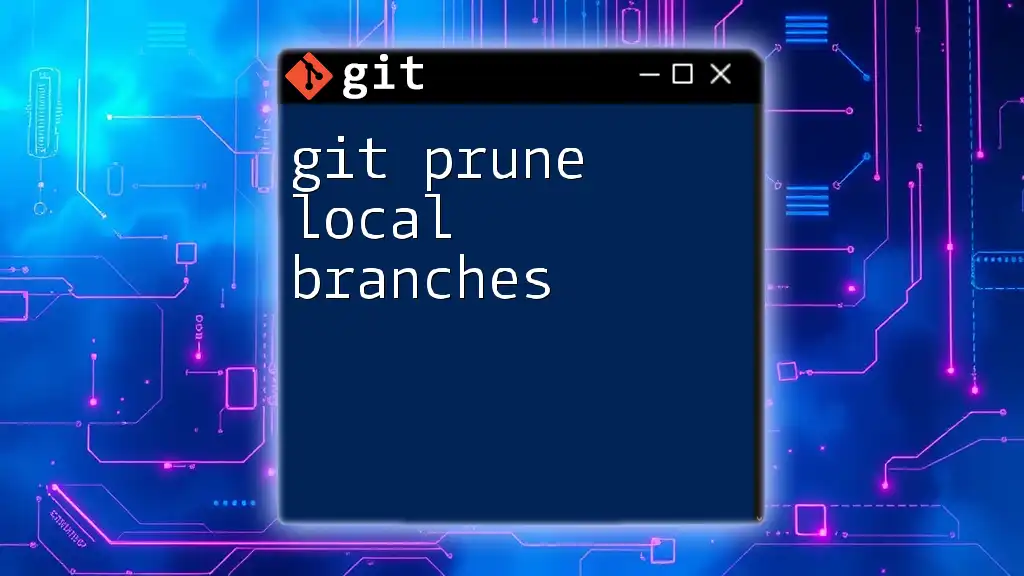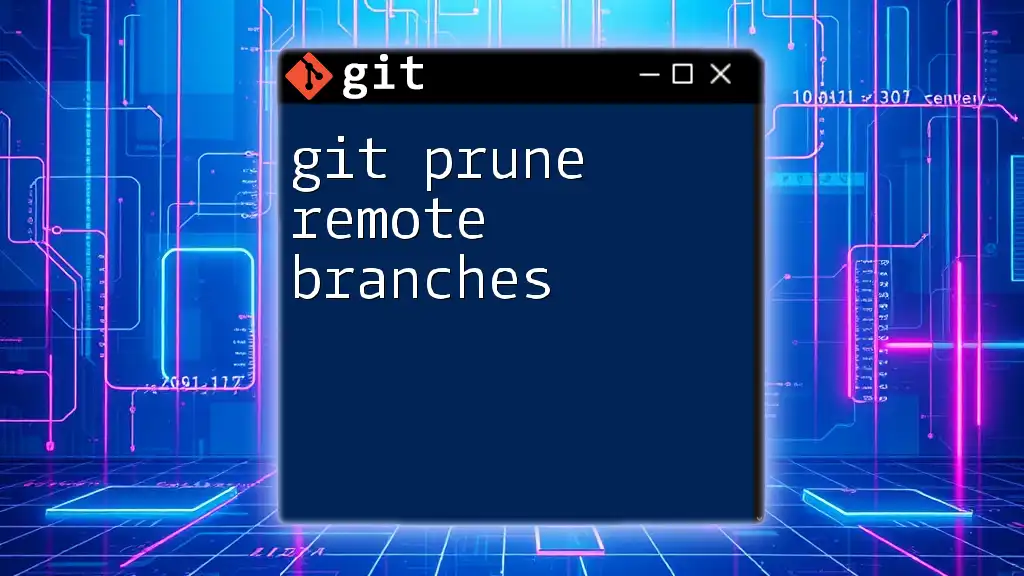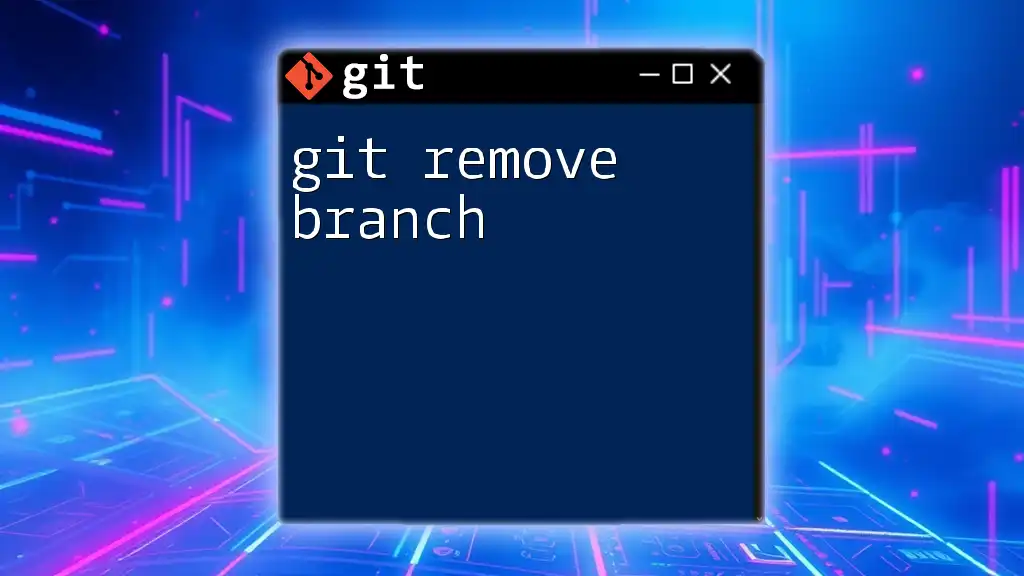`git prune branches` removes references to branches that no longer exist in your remote repository, helping to clean up your local references.
Here's how to use it:
git remote prune origin
Understanding Git Branches
What Are Git Branches?
A branch in Git represents an independent line of development in your project. When you create a branch, Git allows you to diverge from the main line of development, enabling you to work on features, fixes, or experimental ideas without disrupting the stable code base. This isolation is crucial for collaborative environments, where multiple developers might be working on various aspects of a project simultaneously. Visualizing your project as a tree with branches makes it easiest to understand this concept.
Types of Branches
- Local Branches: These branches exist only in your local repository. They let you develop features or fix bugs while keeping your changes private until they’re ready to be shared with the team.
- Remote Branches: A remote branch corresponds to the version of a branch stored on a remote repository, like GitHub or GitLab. When you push your changes to a remote repository, you publish your local branches to make them accessible to other collaborators.
- Tracking Branches: These branches are associated with remote branches, allowing you to track the changes made in the remote repository while making your own changes locally.
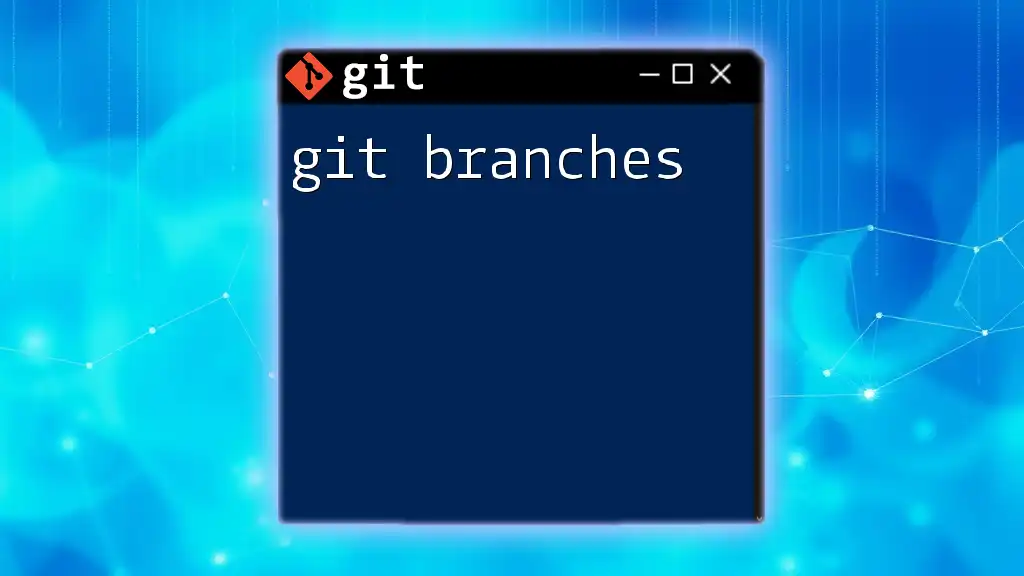
What is 'git prune'?
Explanation of the `git prune` Command
The `git prune` command is a crucial maintenance tool in Git used to remove objects that are not reachable from any reference, such as branches or tags. It helps clean up your repository by eliminating unnecessary data and can improve performance, especially in large projects.
How `git prune` Works
When you execute `git prune`, Git examines the objects in the repository. It identifies which objects are orphaned, meaning they can’t be reached from any branch or tag. These objects could be left behind after deleting branches or reverting commits. By cleaning these up, you ensure your repository remains efficient and tidy.

When to Use Git Prune
Best Practices for Pruning
Regularly assessing your branches is an essential part of maintaining an efficient Git workflow. It’s wise to consider pruning when:
- You notice that the repository is cluttered with outdated branches.
- Performance issues begin to emerge due to an abundance of unreachable objects.
Common Use Cases
Common scenarios where pruning becomes beneficial include:
- After completing a feature branch that has been merged into the main branch, consider pruning the feature branch to prevent confusion.
- When preparing your repository for a release, clean it up for easier navigation and clearer history.

Using the `git prune` Command
Basic Syntax
The simplest form of the `git prune` command is straightforward:
git prune
This command will run the prune operation, removing all unreachable objects.
Common Flags and Options
The `-n` Flag
The `-n` or `--dry-run` flag is useful for testing what objects would be removed without actually deleting anything. This is a protective measure, allowing you to ensure that you’re not unintentionally deleting needed data.
git prune -n
Executing this command will show a list of objects that are candidates for pruning without removing them.
The `--expire` Option
Another useful option is the `--expire` flag, which allows you to specify a cutoff date for object expiration. This means you can prune objects based on their age. For example:
git prune --expire=now
This command will remove any unreachable objects created before the current time.
Examples of Practical Use
Consider a scenario: You’ve been actively developing on a feature branch and have merged it back into the main branch. The feature branch is no longer needed, but remnants of it may still exist in the form of objects. After merging, running
git prune
will help clear out any unnecessary objects associated with that branch, keeping your repository clean.
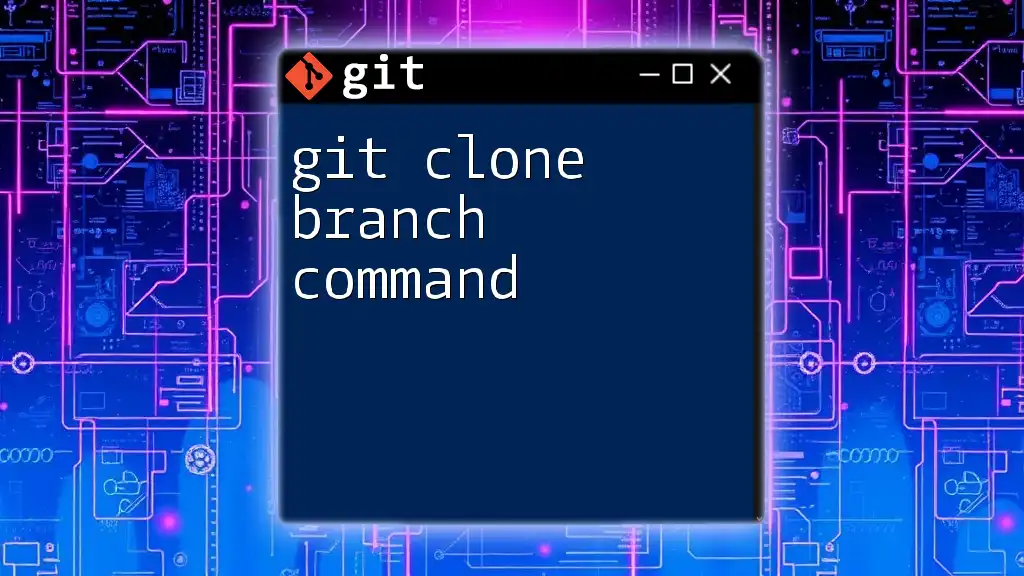
Best Practices for Managing Branches
Regular Maintenance
Creating a regular pruning schedule is essential for effective Git management. Depending on your workflow, consider executing `git prune` after a sprint or at the end of major development phases. This will help keep your repository optimized and easy to navigate.
Combining `git prune` with Other Commands
Integrate `git prune` into your routine by combining it with other Git commands:
- Use `git branch` to list branches and identify stale ones before you prune.
- Switch to a stable branch with `git checkout` before executing prune to avoid potential mistakes.
- Pair it with `git gc`, which performs a more extensive garbage collection, including packing loose objects and pruning.
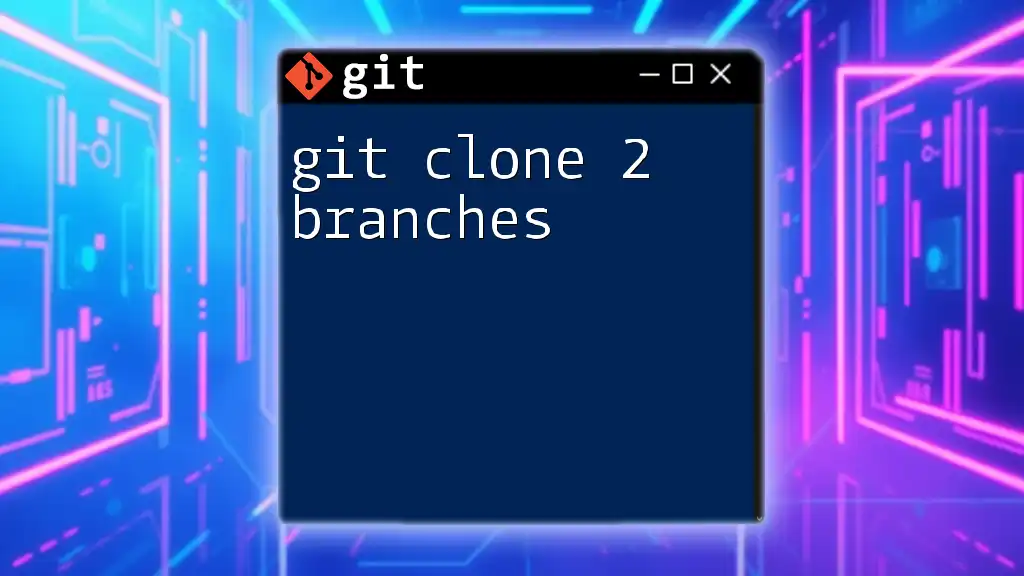
Cautions When Pruning
Understanding Risks
While `git prune` is a helpful command, it is crucial to use it carefully. If misused, you could lose essential data. Always ensure you back up any important branches or tags before running the command.
Avoiding Common Mistakes
To minimize mistakes when working with `git prune`, consider the following checklist:
- Always perform a dry run (`git prune -n`) before executing the final command.
- Regularly verify which branches are still active and needed.
- Communicate with your team to ensure no one is working on or relying on branches you intend to prune.
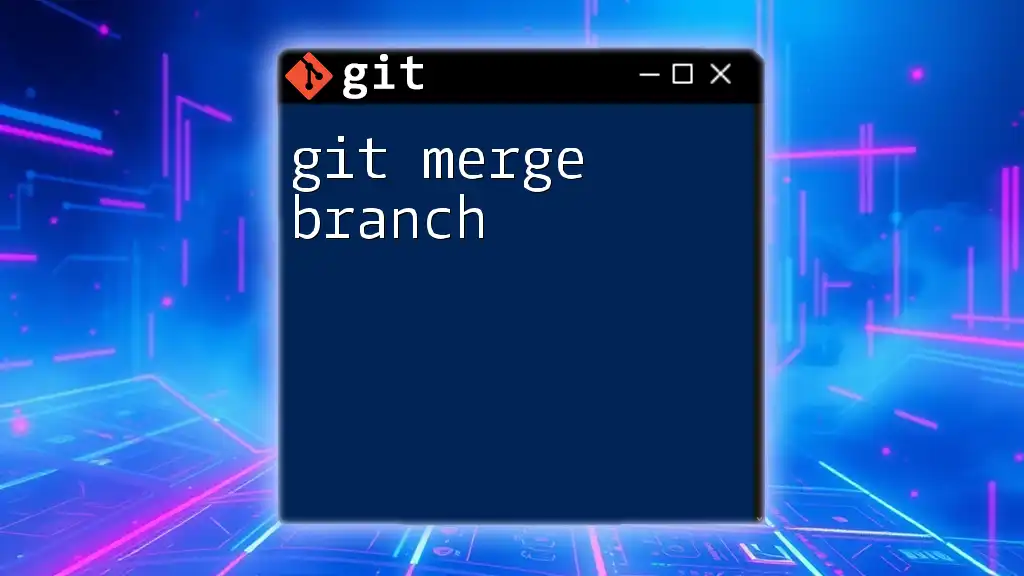
Conclusion
In conclusion, maintaining a healthy Git repository through the proper use of git prune branches is an essential skill for any developer. This command helps keep your repository streamlined, efficient, and easier to work in. By following best practices for pruning and remembering to manage branches judiciously, you can enhance your workflow and productivity. Regularly incorporating `git prune` into your maintenance routines will yield significant benefits in clarity and performance.
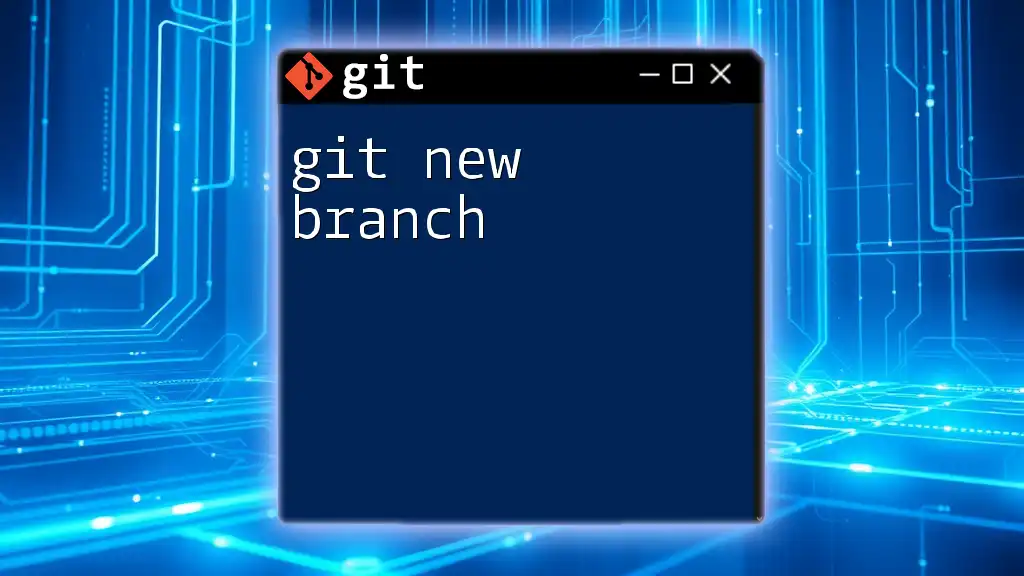
Additional Resources
For more information, you can consult the official Git documentation on `git prune` and explore other resources for improving your Git command knowledge. Happy pruning!

